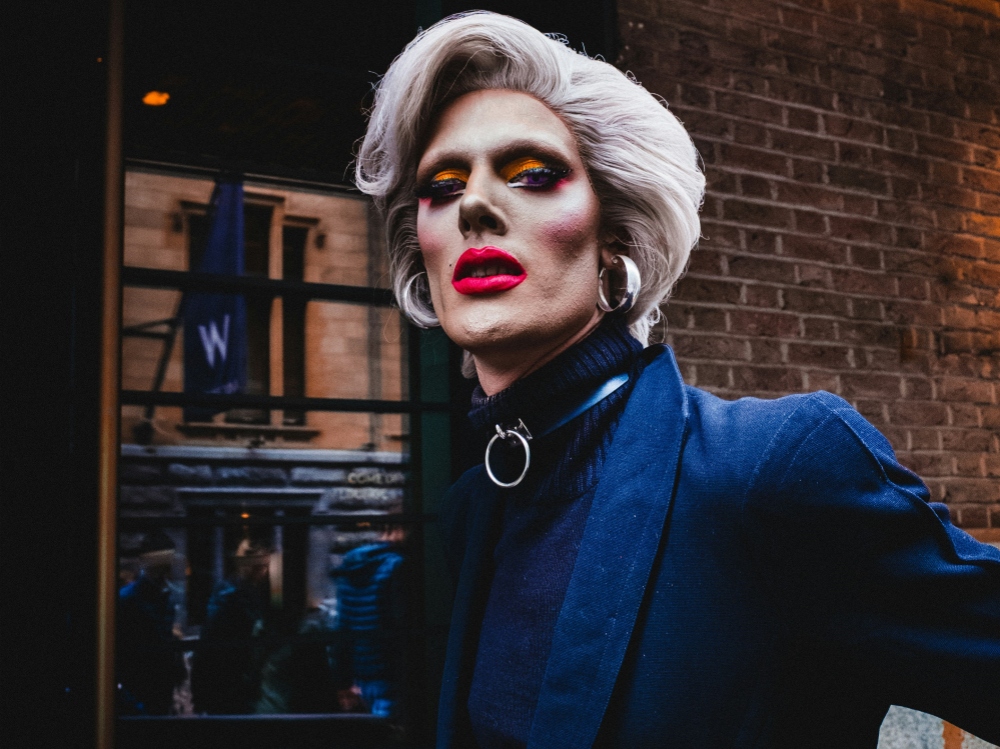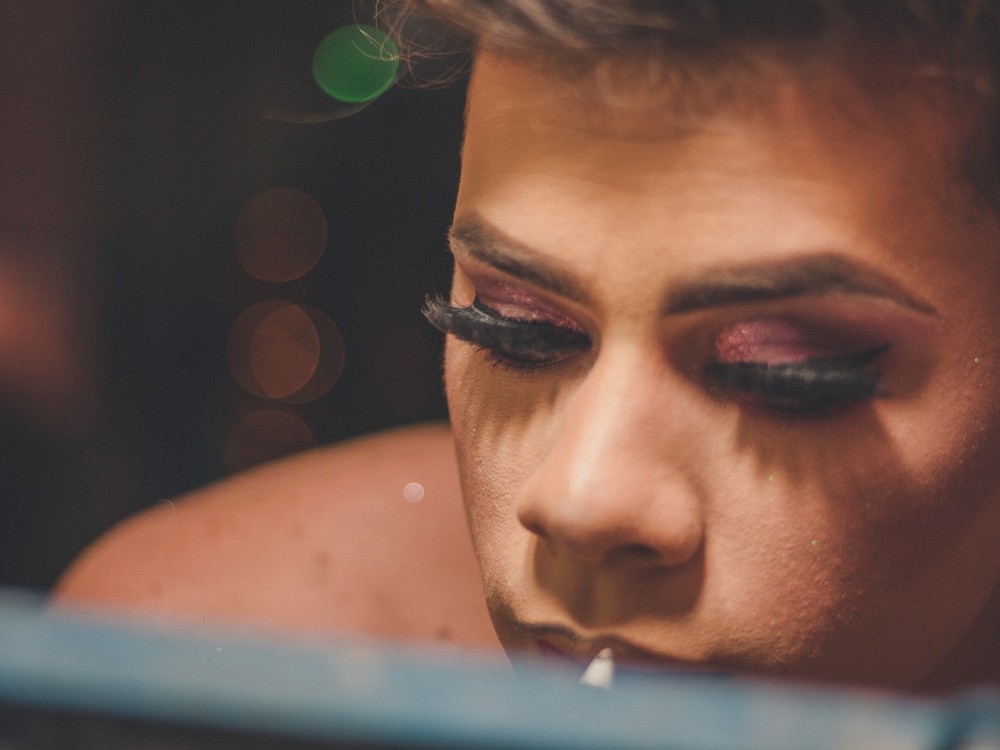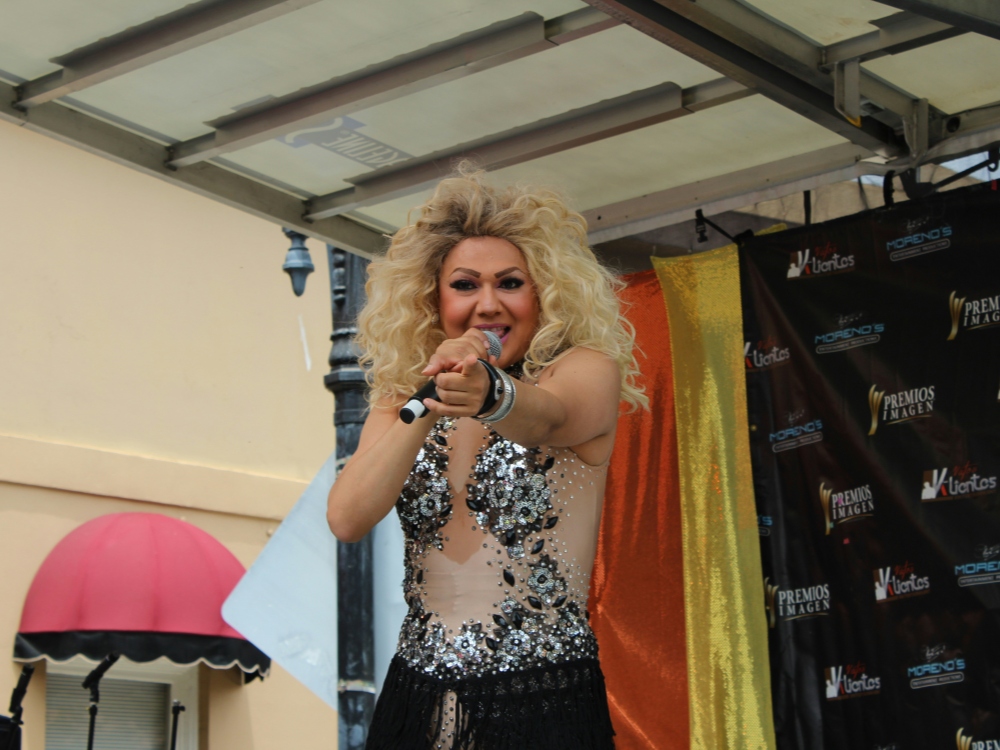Drag queens, predominantly male, transform into exaggerated feminine personas for entertainment, employing intricate clothing, makeup, and gestures. They are mainly seen as a type of gay men like Twink and Bear. With deep roots in gender-bending traditions, they symbolize resilience and creativity within LGBTQ+ culture, showcasing meticulous attention to detail through extravagant costumes and stage presence.
A Brief History of Drag Queen
The roots of drag culture stretch far back into history, with evidence of gender-bending performances dating back to ancient civilizations. In ancient Greece, for example, theatrical productions often featured male actors portraying female characters, laying the foundation for the theatrical artistry and gender exploration seen in modern drag.
Throughout the Middle Ages and Renaissance periods, cross-dressing performances continued to thrive in various forms of entertainment, including Shakespearean theater and European masquerade balls. However, it wasn't until the 20th century that drag culture began to emerge as a distinct and vibrant subculture, finding its roots in the underground LGBTQ+ communities of cities like New York, San Francisco, and London.

The 1960s and 1970s saw a surge in drag visibility and acceptance, fueled in part by the rise of the gay rights movement and the burgeoning counterculture scene. Drag balls and pageants became popular events within the LGBTQ+ community, providing platforms for performers to showcase their talent, creativity, and identity.
Iconic figures such as Marsha P. Johnson and Sylvia Rivera emerged as leaders and activists within the drag community, advocating for LGBTQ+ rights and visibility. With the advent of mainstream media and the groundbreaking success of shows like "RuPaul's Drag Race," drag culture has reached new heights of recognition and influence, inspiring countless individuals to embrace their authentic selves and celebrate the artistry of drag.
Understanding Drag Queen Identity
One of the distinguishing features of drag is its distinction from gender identity. While some drag queens may identify as transgender or gender non-conforming, many others identify as cisgender males who adopt a female persona for their performances. Drag allows individuals to explore and express different facets of their identity in a creative and liberated manner, blurring the lines between gender norms and expectations.
It's essential to recognize that being a drag queen is not synonymous with being transgender. While both involve a degree of gender expression that deviates from societal norms, transgender individuals typically experience a profound and authentic identification with a gender different from the one assigned at birth. In contrast, drag queens often adopt their personas for artistic expression and performance rather than as a reflection of their true gender identity.
The Art of Drag: Makeup, Transformation, and Fashion
Makeup Techniques and Transformations

Central to the art of drag is the transformative power of makeup. Drag queens skillfully use cosmetics to contour their features, create dramatic effects, and craft their signature looks. From bold eyeshadows to sculpted cheekbones, the artistry of drag makeup is a testament to creativity and craftsmanship, allowing performers to embody their chosen personas with confidence and flair.
Costume and Fashion Choices in Drag
In addition to makeup, costume and fashion play a pivotal role in the world of drag. Drag queens meticulously curate their wardrobes, selecting garments that reflect their personal style, aesthetic preferences, and performance themes. From glamorous gowns to avant-garde ensembles, drag fashion encompasses a diverse range of styles, allowing performers to express their creativity and individuality on stage.
The Role of Drag in LGBTQ+ Culture
Drag as a Form of Self-Expression
For many members of the LGBTQ+ community, drag represents more than just entertainment—it serves as a powerful form of self-expression and empowerment. Through drag, individuals can explore and celebrate their identities, challenge societal norms, and find solidarity within a vibrant and accepting community. Drag performances often serve as platforms for social commentary, activism, and celebration of queer culture.

Drag Queen Community and Support Networks
At the heart of drag culture lies a strong sense of community and camaraderie. Drag queens form tight-knit networks of performers, supporters, and allies, offering mentorship, guidance, and encouragement to aspiring artists. Whether in local drag scenes or on global platforms, the drag community fosters inclusivity, diversity, and mutual respect, creating spaces where individuals can express themselves authentically and without judgment.
Different Types of Drag Queen Performances

Drag performances encompass a diverse array of styles and formats, each with its own unique charm and appeal. From high-energy lip-syncing routines to side-splitting comedy acts to glamorous pageants, drag queens showcase their talents in a variety of settings and contexts. Whether commanding the stage with powerhouse vocals or eliciting laughter with razor-sharp wit, drag performances captivate audiences with their creativity, charisma, and showmanship.
Impact of Drag Shows on Audiences
Drag shows have a profound impact on audiences, transcending entertainment to evoke emotions, provoke thoughts, and inspire change. For many spectators, drag offers a glimpse into the rich tapestry of LGBTQ+ culture, fostering understanding, empathy, and acceptance. Drag performances challenge stereotypes, break down barriers, and foster connections among people of all backgrounds, making them a transformative and uplifting experience for performers and audiences alike.
FAQs
1. What is the point of drag queens?
Drag queens use their performances as a form of artistic expression, entertainment, and sometimes activism. They challenge gender norms, celebrate diversity, and create inclusive spaces for self-expression and community building.
2. Why do people do drag?
People do drag for a variety of reasons, including self-expression, artistic fulfillment, and empowerment. Drag allows individuals to explore different aspects of their identity, challenge societal norms, and connect with like-minded individuals within the LGBTQ+ community.
3. What's the difference between cross-dressing and drag?
Cross-dressing typically refers to the act of wearing clothing traditionally associated with the opposite gender, whereas drag involves adopting exaggerated feminine or masculine personas for performance or entertainment purposes. While both may involve aspects of gender play, drag often involves a more theatrical and performative element.
4. Can a woman be a drag king?
While drag kings—individuals who perform in exaggerated masculine attire—are less common than drag queens, women can certainly participate in drag king performances. Drag is a form of artistic expression open to individuals of all genders, allowing performers to explore and celebrate different facets of their identity.
5. Can straight people watch drag?
Yes, drag performances are open to people of all sexual orientations and identities. Drag shows are not exclusive to LGBTQ+ individuals and are enjoyed by audiences from diverse backgrounds. Watching drag can be a fun and entertaining experience for anyone interested in creativity, talent, and theatricality.
In conclusion, drag queens embody a rich tapestry of artistry, identity, and community, enriching the cultural landscape with their creativity, resilience, and authenticity. From dazzling performances to meaningful social commentary, drag queens continue to captivate audiences and inspire positive change, proving that the power of drag extends far beyond the stage.








